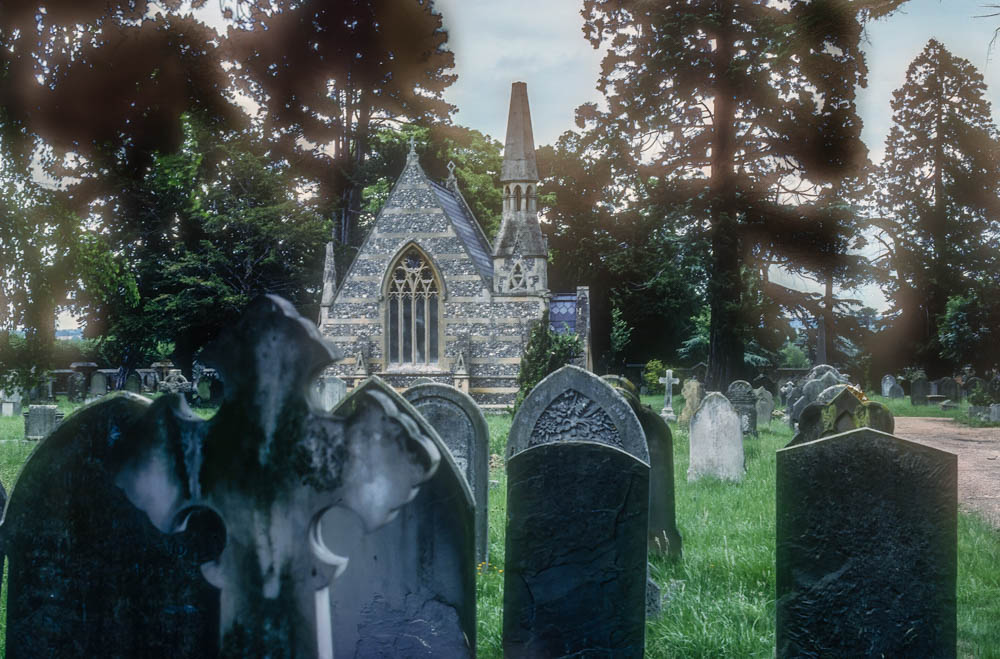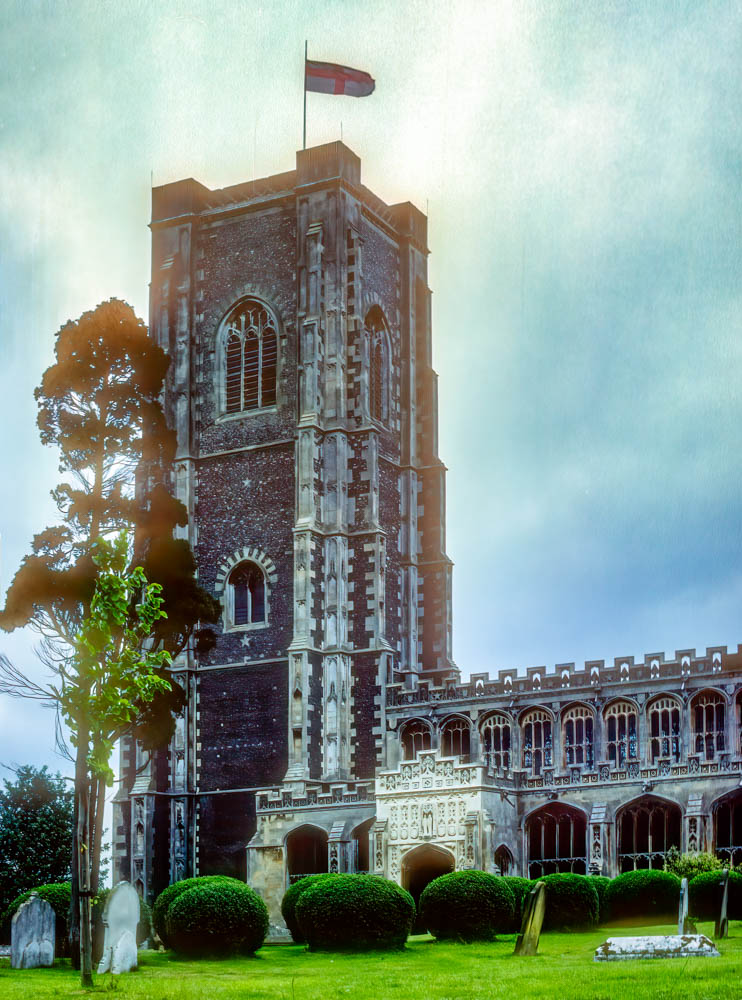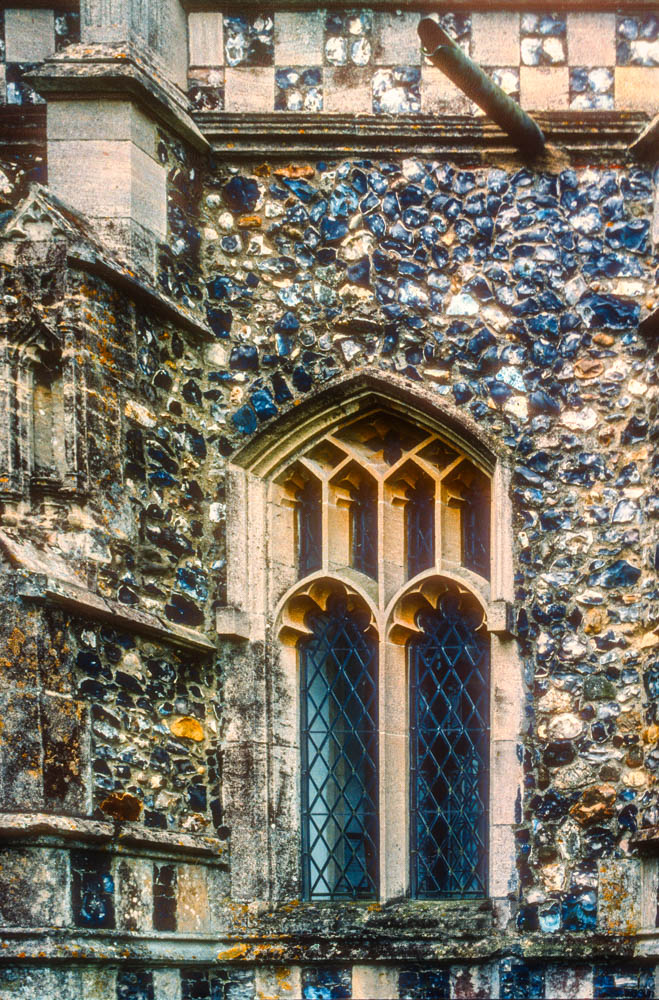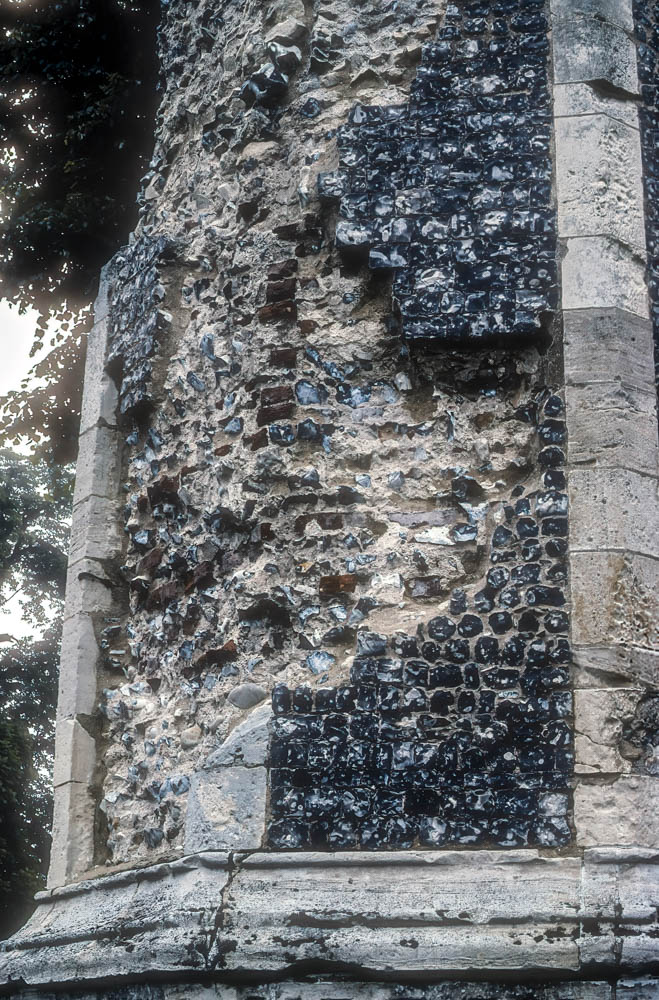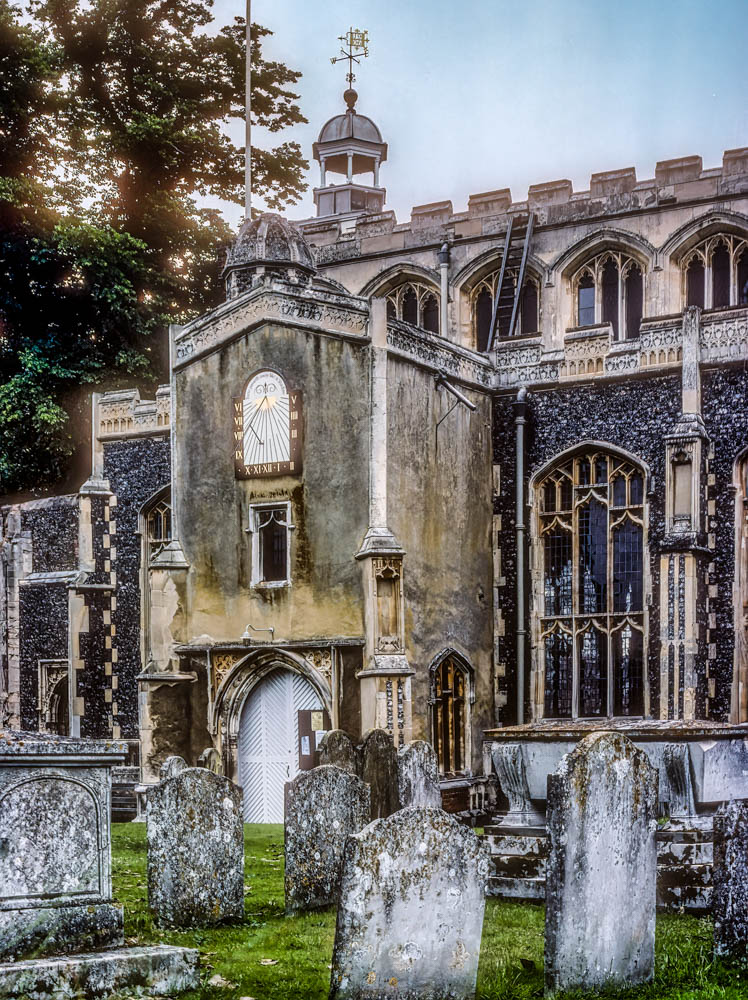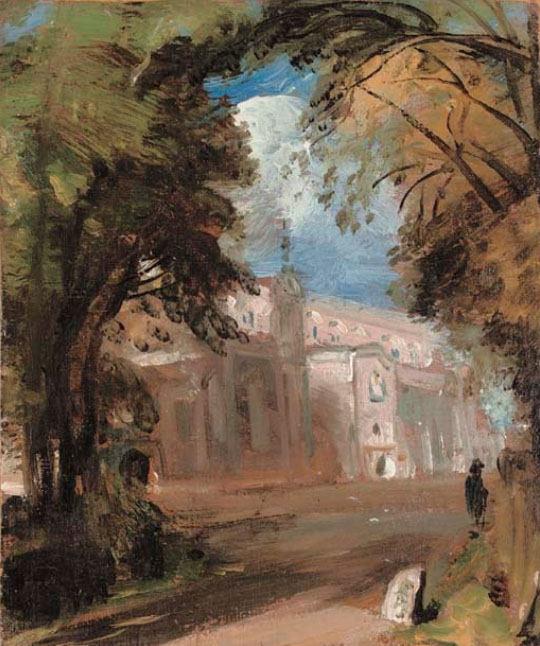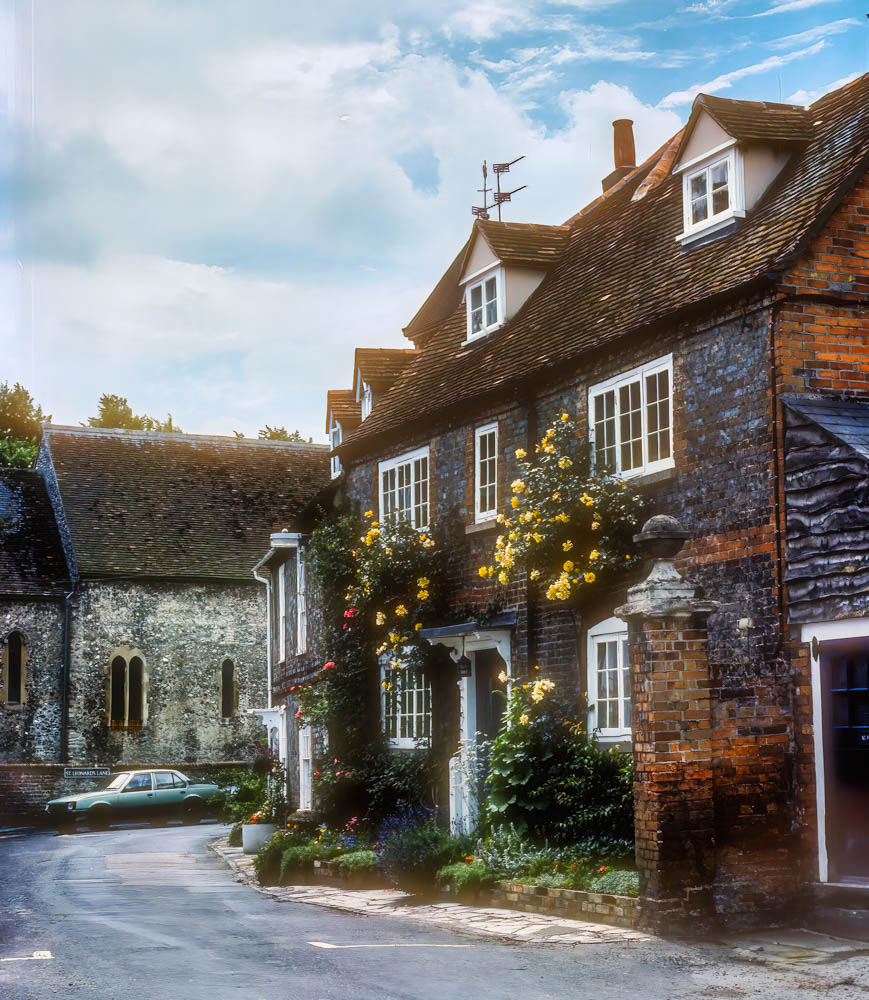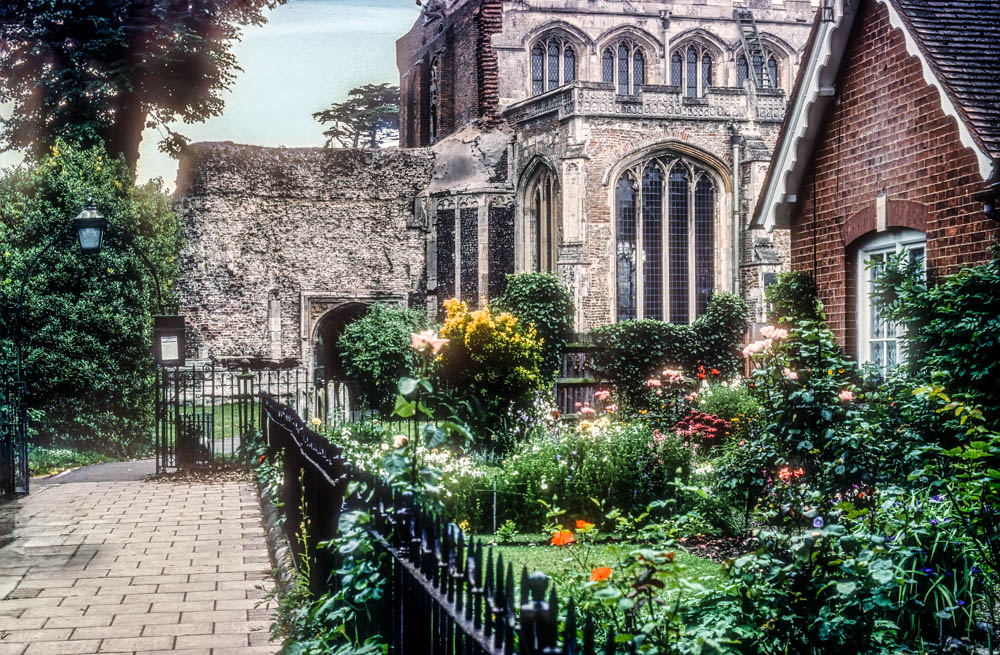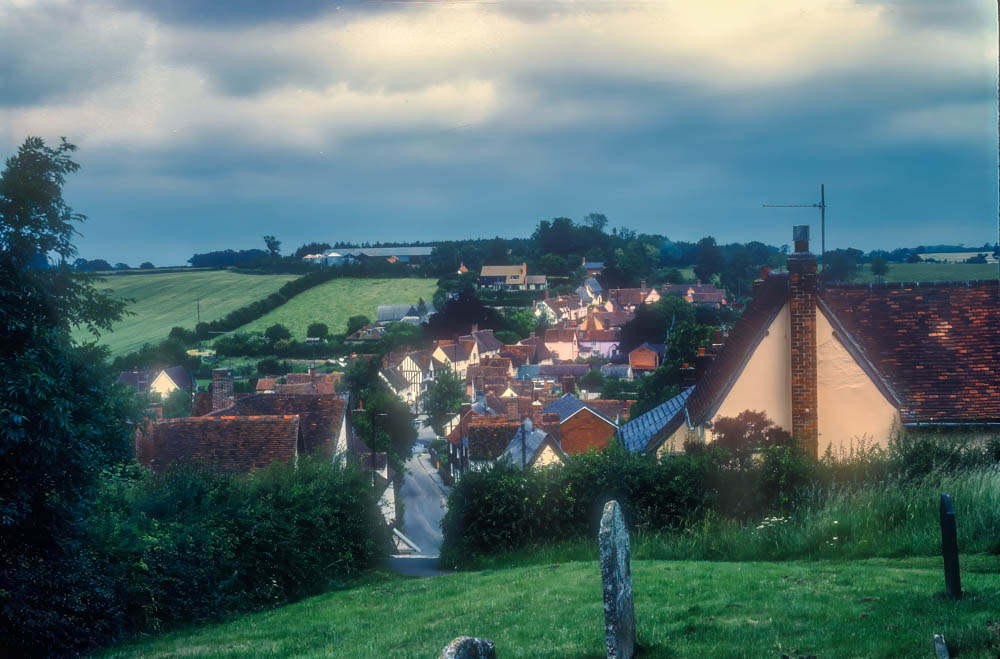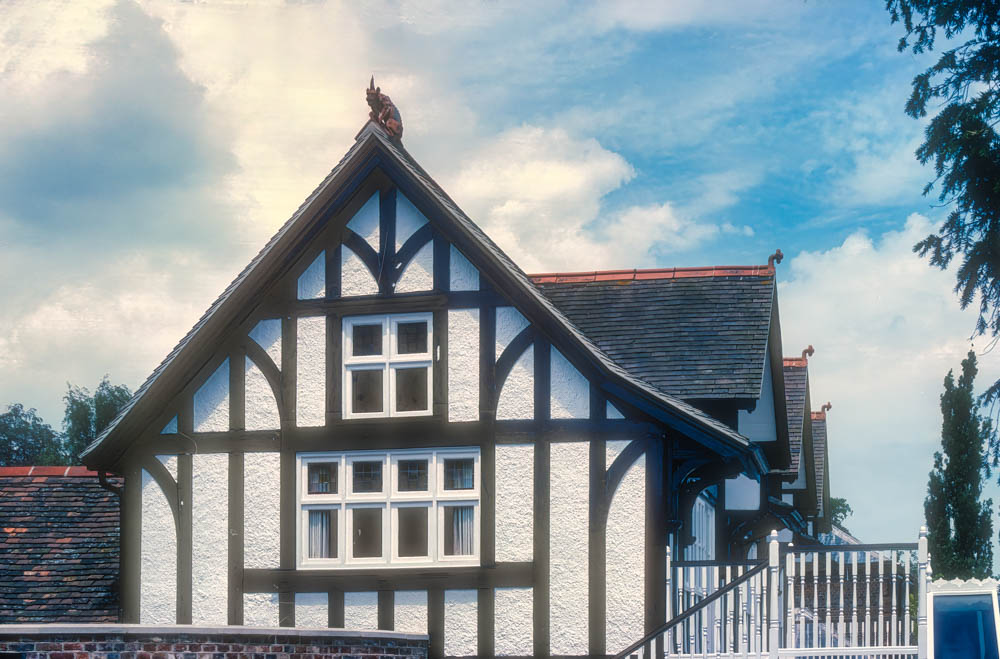East Anglia and Flint
These photos were taken in East Anglia around 1990 when I accompanied my husband Gil on a business trip. I took him to where he had to be for the day and then took off in the rental car to drive on the left with a stick shift car. That wasn’t the only problem, it turns out most of the roads I chose were one lane, lined with tall hedges, and the road had lots of curves and hills. I expected to die on every curve and hill… But I found some fun things…
Some of the locations I could identify thanks to the internet, but many I could not, including the church pictured above. I decided to focus this story mostly on the buildings decorated with flint that I ran across.
“Mined black, it could also be gathered as rounded, grey pebbles (or larger cobbles) on beaches. Romans used it in Burgh Castle and Anglo-Saxons in round-towered churches; from Norman times it was made into castles, monasteries, manor houses, cottages, barns and city or garden walls.” 1. I read that flint architecture tended to be used where no good local stone was available. The flint is generally set in lime mortar which makes a good contrast with the dark flint. In some of the buildings in poor repair you can see that the structure under the flint surface is mixed materials that are not attractive at all. Although the labor cost was high, it was cheaper than importing good stone. 2.
Below are two photographs of St. Mary the Virgin in East Bergholt, Suffolk, England. The photos in the link indicate some renovation has been made since these photos were taken.
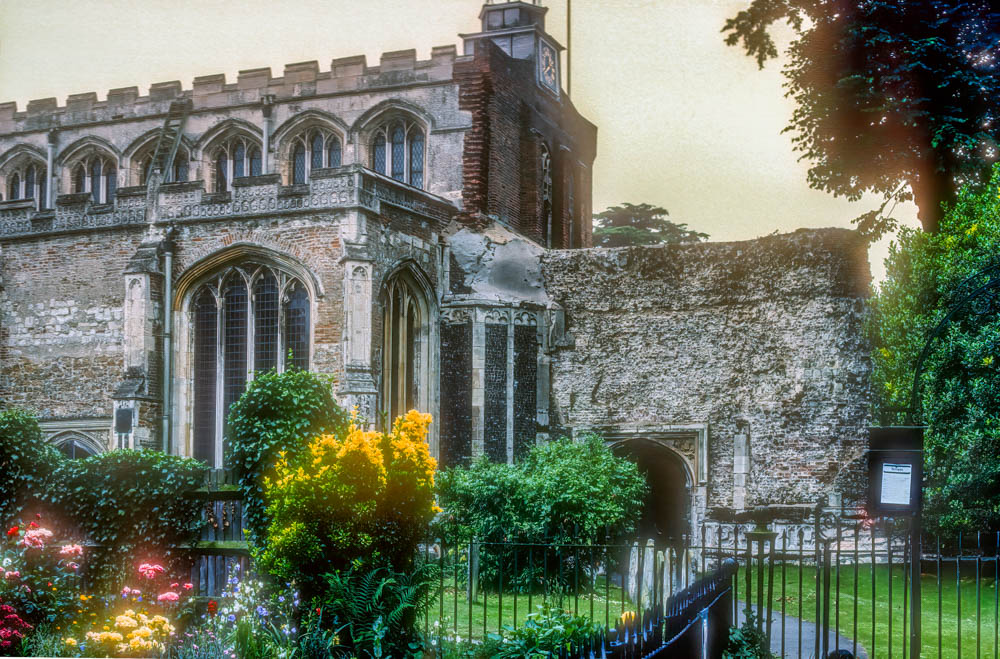
Click on the image to see it larger to see the poor quality material of the church structure.
At left below is an oil sketch by John Constable of St. Marys East Bergholt. One of the joys of visiting East Anglia is to see the region where Constable, Thomas Gainsborough and other famous artists found their inspiration. Constable’s parents are buried in the churchyard. At right below is a house that appears to have flushwork and a church in the background in disrepair.
Flint has been mined in this region since neolithic times when flint was the best thing to use for knives and axes. One neolithic mine has been open to the public and may be open in the future: Grimes Graves. “Grime’s Graves is the only Neolithic flint mine open to visitors in Britain. This grassy lunar landscape of 400 pits was first named Grim’s Graves by the Anglo-Saxons. It was not until one of them was excavated in 1870 that they were identified as flint mines dug over 5,000 years ago. A small exhibition area illustrates the history of this fascinating site. Visitors can descend 9 metres (30 ft) by ladder into one excavated shaft to see the jet-black flint.”
If you are interested in this technique, I suggest you visit the links or look it up for better photos than I have here. These photographs were taken on slide film and poorly stored for many years before scanning.
References:
Interesting site about flint
F is for Flushwork
How flint made the jump from the Cretaceous to our churches
Flushwork
9 famous artists from Norfolk and Suffolk
And what is flint?
